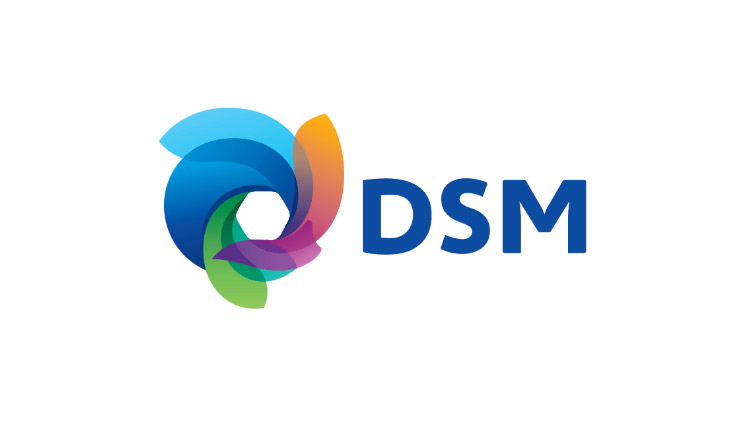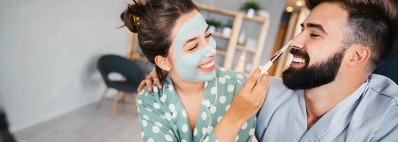Promotional Features
One of the family’s strongest bonds opens a window to skin care needs
Information and accessibility have drastically changed the way that consumers view their health and beauty. Empowered by technology to take control, consumers are actively (and proactively) seeking ways to improve and enhance their appearance, often looking for solutions that match individual needs.
Recent DSM Trends’ Research identified non-invasive “Medical Beauty” as a fast-evolving trend that’s driving demand. As another avenue to be in control of well-being and appearance, medical beauty is being embraced by consumers who are increasingly looking for effective skin care solutions that can provide visible and immediate effects. These solutions can include both topical skin care products as well as medical procedures that help consumers achieve the look they desire – a concept that’s ever-evolving in the age of Instagram and selfies. In 2017, 55% of facial plastic surgeons saw patients who wanted to look better for selfies[1]. Global facial injectables are foreseen to become double-digit growth between 2018-2025 [2], and the cosmeceuticals market is expected to double by 2023[3].
Prevention is key at any age
Embracing medical beauty doesn’t have to mean surgery though, and there’s a wide variety of minimally and non-invasive options available as well. What’s interesting to note though is how these solutions are being sought out by younger and younger consumers. Millennials are using anti-aging products beginning around age 26 (on average) – 20 years earlier than their mothers – with a focus on preventing the signs of aging[4]. “Preventive Botox” has increased by 28% in the past seven years among consumers age 20-29[5], and the majority of Chinese consumers having plastic surgery are younger than 35[6]. These statistics reveal a generational shift in the approach to aging, with prevention playing a central role in the choices consumers are making for their skin care products, beginning at a much younger age.
New consumer insight generated by DSM confirms this shift. Via a newly launched platform called “DSM Consumer Insights Hub,” DSM went straight to the source and gathered real insights from real consumers about their views on the role of prevention in well-aging. Their voices speak loud and clear: prevention is top of mind.
“… prevention is key when it comes to skin aging… it’s something that everyone needs to be quite proactive about. People are probably more skin aware today than they used to be.” – Melody, age 29
“I try to obviously keep myself wrinkle-free. It’s very important to start from an early age, a young age, because prevention’s better than cure.” – Hsin, age 36
“I really do value the prevention of skin aging because I want to stay as young looking as possible.” – Natalie, age 35
Is there a window to the future? Look no further than family
Understanding what causes wrinkles in the first place can inform consumers’ choices for preventive skin care. DSM’s newest study has proven that, while there is no crystal ball, there is a window into aging for young women: their mothers. This research proves the close link between the skin of mothers and their daughters, especially when it comes to facial expressions which can, over time, turn into mimic wrinkles. In this way, mothers can offer a window into their daughter’s future.
Its already known that over time, expression lines turn into persistent wrinkles, especially on the forehead and the crow’s feet. In addition, there’s growing scientific evidence of similar wrinkle imprinting in mothers and their daughters which suggests that daughters share 50% of their genome with their mothers and thus, daughters often look similar to their mothers and age similarly[7]. Beyond genetics, there is a strong behavioral and emotional bond between mothers and daughters – stronger than any other one in families[8]. Multiple theoretical perspectives recognize the mother-daughter bond as lifelong, intimate and developmentally important. Furthermore, the importance of the mother-daughter relationship has been well-documented across cultures.[9]
Daughters’ voices taken from the “Consumer Insights Hub” also attest that these young women are already looking to their mothers as an indication of how they will age:
“I think the way your mother ages probably tells you a lot about how you’re going to age. I suspect there’s a lot of genetic components. Facial expressions, repeated movements which might cause lines.” – Melody, age 29
“My mother’s way of aging has definitely made me more cautious. I look at her and, as beautiful and as wonderful a person as she is, she does show signs of aging in my same areas . . .” – Sara, age 30
“People tell me I look more and more like my mum every day, I think because I’m starting to get the same wrinkles that she’s getting and I’m seeing that same pattern happen.” – Veronika, age 34
Despite the strong mother-daughter bond and the genetic predisposition of aging between mothers and daughters, a proactive approach to skincare can play an impactful role in well-aging.
Turn to peptides to delay wrinkle progression
There are solutions in the market that can help to reduce the appearance of wrinkles and laughter lines. Peptides are small, synthetic active compounds with a known mode of action proven to effectively address common signs of aging. DSM is one of the leading companies in rational-design-inspired peptides for skincare applications, offering preservative-free, safe and even vegan topical applications. DSM’s tripeptide SYN-AKE is proven to reduce and prevent the appearance of mimic wrinkles. This type of wrinkle results from repetitive facial muscle contractions over time, linked to facial expressions. Proactively using solutions such as SYN-AKE can help make the difference in delaying wrinkle progression.
New research shows you can defy time and age
With over 60 years of experience in the field, DSM continuously invests in new pathways to discover the full potential of these components. The groundbreaking ‘Mothers and Daughters’ study reveals the progression of repetitive facial expressions into mimic wrinkles, and how the use of a tripeptide such as SYN-AKE can help reduce deep wrinkles in mothers and possibly also help delay their appearance in daughters.
In this four-week study, the two groups applied SYN-AKE twice daily. In the mothers group (age 50-65), SYN-AKE helped their skin to relax without losing the ability to express and visibly reduced deep wrinkles, especially in key areas like the forehead and crow’s feet. The volunteers’ self-assessment after the application showed that 83% felt relaxed and 86% noticed their skin felt relaxed.
The study also aligned visualizations of the mothers and daughters (age 21-35) and confirmed that the lines shown in the daughters’ ‘expressive’ faces mimic the persistent wrinkles shown in the mothers’ ‘relaxed’ faces. With its ability to help relax the face, SYN-AKE can also help reduce the appearance of deep wrinkles and, when used earlier in time, can help delay their progression with an age-freezing effect. In the daughters’ self-assessments after application, 96% felt their skin was relaxed and 88% felt their skin was smooth and supple.
Share laughter, not wrinkles
Delaying the signs of aging is a growing desire among younger consumers, who are increasingly seeking products that promote prevention earlier than ever. Daughters in particular are looking to their mothers as an indication of how they will age and taking a proactive approach to skin care. A powerful tripeptide such as SYN-AKE can help both generations by helping prevent the appearance of wrinkles in daughters (especially when used earlier in time) and visibly reducing them in their mothers, while helping the faces of both to relax without losing the ability to express. After all, life should be about expressions – not wrinkles!
[1] DSM Trends Landscaping 2018
[2] DSM Trends Landscaping 2018
[3] https://www.mordorintelligence.com/industry-reports/global-cosmeceuticals-market-industry
[4] DSM Trends Landscaping 2018
[5] DSM Trends Landscaping 2018
[6] DSM Trends Landscaping 2018
[7] Hillebrand GG, Liang Z, Yan X, Yoshii T: New wrinkles on wrinkling: an 8-year longitudinal study on the progression of expression lines into persistent wrinkles. Br J Dermatol 2010, 162(6):1233-1241.
[8] Yamagata B, Murayama K, Black JM, Hancock R, Mimura M, Yang TT, et al. Female-Specific Intergenerational Transmission Patterns of the Human Corticolimbic Circuitry. J Neurosci. 2016;36(4):1254-60.
[9] Bojczyk KE, Lehan TJ, McWey LM, Melson GF, Kaufman DR. Mothers’ and Their Adult Daughters’ Perceptions of Their Relationship. Journal of Family Issues. 2010;32(4):452-81.
Owen-Smith PL. Mothers and Children: Feminist Analyses and Personal Narratives, and: The Price of Motherhood: Why Motherhood Is the Most Important--and Least Valued Job in America, and: Mothers and Daughters: Connection, Empowerment, and Transformation (review). NWSA Journal. 2003;15(1):181-6.




